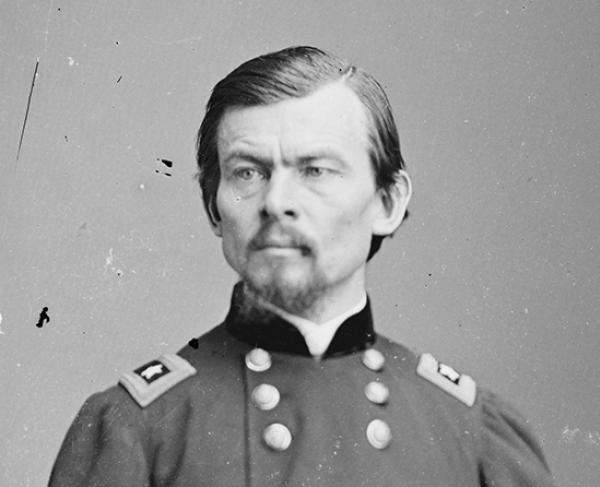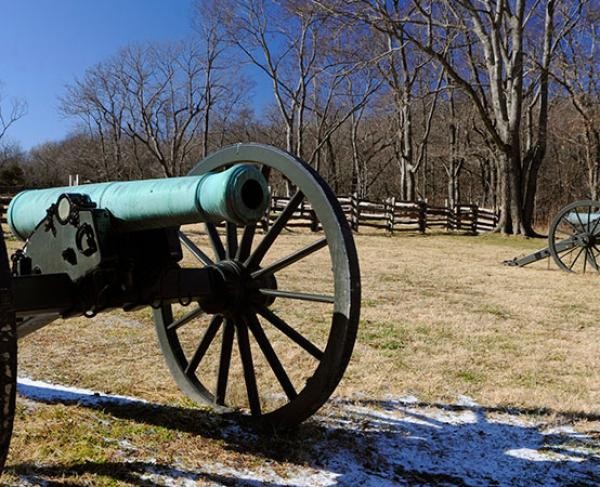By Dr. Curtis Varnell
A pivotal point in the Civil War occurred on March 7 and 8th of 1862 at the Battle of Pea Ridge, AR. The battle, marking the last realistic effort of the Confederacy to expand into Missouri, ended in an abysmal defeat of the superior Confederate forces and effectively wiped out much of the leadership for Confederate forces west of the Mississippi. For both armies, led by men with distinguished military reputations, the resulting battle appears a battle of calamitous mistakes and errors.
The southern forces were led by General Earl Van Dorn. Van Dorn was chosen for leadership of the forces over General Sterling Price and General Ben McCollough. Van Dorn, a relative of Andrew Jackson, had a reputation as a man with an aggressive nature who would get the job done and he wished to live up to the reputation. Arriving in Fort Smith, he determined to quickly move his men north to the Missouri border to counter any advance from the Union Army of the Southwest under General Samuel Curtis.

March 1862 was a cold, wintery season and Van Dorn was under the weather. Hearing that Union troops were in the Fayetteville area and on the move, he ordered his 16,000 men troops to ready themselves to march northward. Van Dorn was in a hurry. Ordering his men to take only 40 rounds of ammunition, what food they could carry on themselves, and no tents, his troops left Van Buren and double-timed northward. Van Doren traveled along in an army ambulance, supposedly to ill to walk with his men. His supply wagons were left far behind.
By the time the men had marched the seventy miles to Bentonville, they were cold, worn out, sleep-deprived and poorly prepared for battle. Anticipating his arrival, General Samuel Curtis had concentrated his troops on a ridge above Sugar Creek, just west of present-day Rogers. Van Dorn wisely decided to not attempt a frontal attack up the steep slope above the creek. Van Dorn left a small encamped force that marched around, set -up tents, started roaring fires and, in general, convinced Curtis that he was facing the entire Rebel Army.
The Confederate forces than determined to march up Bentonville road behind the union forces and attack from the north. Splitting his forces, Van Dorn circled north of Pea Ridge while General McCulloch took the more direct route toward Elkhorn Tavern and the telegraph line. More than likely, all would have been lost for the Union had they not encountered a scouting force lead by Colonel Peter Osterhaus. Osterhaus, possibly the hero of the entire battle, was greatly outnumbered but refused to retreat. Fighting valiantly, they held off the much larger force commanded by McColloch. In a series of bad judgements and mistakes, McColloch decided to reconnoiter the front to determine the size of the force he was facing. Approaching to near the front, he was shot and killed. Shortly thereafter, his second in command, James McIntosh suffered the same fate. All was not lost, third in command, Colonel Louis Hébert and his troops still had numerical superiority over the Union forces. Unfortunately for the Confederates, he became lost while going through the surrounding woods and was captured. Albert Pike, with his own troubles surrounding the use of the Cherokee troops, failed to rally the men.
In the meantime, Curtis finally pulled his troops back from Sugar Creek and rushed to Telegraph Road to cut off Van Dorn. During the ensuing melee, the Elkhorn Tavern became the center of the bloody battle. Wounded from both sides filled the house and surrounding area. Bullets whined and cannon shot whirled overhead as medical staff desperately tried to staunch the flow of blood while removing broken limbs. Individuals caught in the deadly flow of the battle described the carnage wrecked on both armies. As evening approached, the union forces were driven from the area. The Confederates, arriving at the tavern, happened upon tents and food left as the Union fled the area. Starving and without ammunition, the men began to devour the food they discovered, too exhausted to continue to fight. The ammunition wagons were still far behind and the opportunity to win the battle was lost.
The Union troops recovered and set-up a line of defense just down the road. Brigadier General Seigel, a man described as, ““superior in tactics, incompetent in battle and hell on retreat,” became the unlikely hero, Siegel, commanded a line of rifled, accurate cannon that blocked and encircled the telegraph road. Knowing defeat would mean death or imprisonment, Seigel and his artillery stood firm as the Rebel Army expended its limited ammunition and unlimited blood. The Union suffered 1,384 casualties, the Rebel army over 2,000.
Always a great place to visit, the Pea Ridge National Park will commemorate the battle on March 7, 8, 2025.






